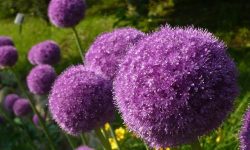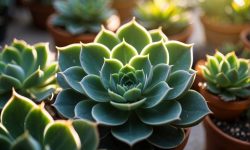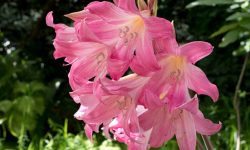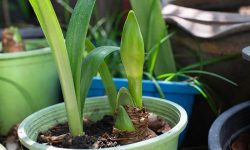How long does bergenia bloom is a question every gardener asks when admiring its bold leaves and charming flowers. Known for their resilience and ability to thrive in many climates, bergenias reward care with vibrant pink, purple, or white blooms. Their evergreen foliage ensures the plant offers interest long after the flowers fade, making them a true four-season favorite in any garden.
Understanding the blooming cycle is essential for keeping bergenia healthy and colorful year after year. From early spring blossoms to autumn foliage displays, each season plays a role in the plant’s vitality. With proper care, you can extend the bloom period and enjoy bergenia’s beauty in every corner of your garden, regardless of weather challenges.
Understanding How Long Does Bergenia Bloom

Bergenia is admired not only for its striking foliage but also for its charming flowers that brighten gardens at different times of the year. When asking how long does bergenia bloom, most gardeners are surprised to learn that this perennial often produces flowers in both early spring and, in some regions, again in autumn. Typically, the main blooming season lasts for about four to six weeks, but with the right growing conditions, you may enjoy bursts of color beyond that timeframe.
The length of bloom is strongly influenced by environmental conditions. In cooler climates, bergenia tends to hold its flowers longer, often extending well into late spring. In warmer regions, the blooms may appear earlier but fade faster due to heat. Factors such as soil health, moisture, and exposure to sunlight also play a key role in determining whether the plant thrives and maintains its flowers over a longer period.
Another fascinating feature of bergenia is its ability to showcase both flowers and attractive foliage simultaneously. Even when the bloom season is shorter, the broad evergreen leaves continue to add garden interest throughout the year. By understanding how long does bergenia bloom and what influences its flowering cycle, you can plan garden displays more effectively and pair bergenia with other plants to maintain a consistent wave of beauty across seasons.
Factors That Influence Bergenia Blooming
Climate and Temperature
Climate plays a defining role in answering the question of how long does bergenia bloom. In regions with mild and cool springs, bergenia flowers can remain fresh for several weeks, sometimes stretching into late spring. The cooler temperatures slow the fading process, helping petals retain their color and texture. Conversely, in hot regions, the intense sun and higher daytime heat cause flowers to wither more quickly, often reducing bloom time to just a couple of weeks. Frost and late spring cold snaps may also damage buds, delaying or shortening the display. Sudden weather shifts, such as unexpected heat waves or early frosts, can cut the bloom cycle short even in otherwise favorable climates.
Gardeners who wish to maximize bergenia’s blooming season need to work with their local conditions. In hot climates, providing afternoon shade or planting in cooler microclimates near trees or buildings can extend flower life. In cooler climates, giving bergenia access to more sunlight helps bring earlier blooms. Adding mulch helps regulate soil temperature, protecting roots from extremes that might harm flowering. By paying attention to weather patterns, adjusting placement, and offering seasonal protection, you can ensure bergenia flowers reach their full potential and stay vibrant longer in your garden.
Sunlight Exposure
Sunlight is another powerful factor in how long does bergenia bloom. Bergenia can tolerate partial shade, but without at least a few hours of direct light, the plants often produce fewer flowers. Morning sun is particularly valuable because it gives energy for blooming without exposing flowers to afternoon heat. Plants deprived of sufficient light may grow dense, lush foliage but will disappoint with a shorter or less colorful flower season. Shade-heavy areas also increase the risk of fungal diseases, which indirectly shortens the bloom period.
Too much direct afternoon sun, however, can stress the plant, especially in warmer climates. The blooms may fade faster, and foliage may scorch under harsh rays. That’s why locations with dappled sunlight or morning sun followed by afternoon shade are ideal. Gardeners can also use taller companion plants to provide natural shade during the hottest part of the day. When bergenia receives balanced exposure, it thrives, producing longer-lasting blooms. Careful placement in the garden allows you to maximize both flower quality and duration, ensuring these perennials remain a highlight throughout the blooming season.
Soil Quality and Nutrition
Soil is the foundation for bergenia’s ability to bloom and sustain flowers. Bergenia thrives in rich, well-drained soil that is slightly moist but not waterlogged. Heavy clay or sandy soil without amendment often leads to weak growth, fewer flowers, and shorter bloom duration. Nutrient-poor soil limits the plant’s ability to form strong flower stalks, while excess water retention increases the risk of root rot, which weakens the overall plant. Soil pH also matters; bergenia generally prefers neutral to slightly acidic soil that supports nutrient uptake efficiently.
To create the best conditions, gardeners should improve the soil before planting by incorporating organic compost or well-aged manure. This not only improves structure but also enhances nutrient availability. Mulching around the plant maintains soil moisture and regulates temperature, while gradually releasing nutrients as it breaks down. A balanced, slow-release fertilizer in early spring further supports healthy blooms. Supplemental feeding during the growing season helps extend bloom longevity. When soil conditions are properly managed, bergenia delivers stronger, longer-lasting flowers that maintain their beauty well into the season, rewarding gardeners with reliable color year after year.
Watering Practices
Watering significantly influences how long does bergenia bloom. These plants prefer consistent moisture to maintain healthy foliage and flowers. During dry spells, insufficient watering causes stress, reducing flower quality and shortening bloom time. Although bergenia can handle short periods of drought once established, lack of water weakens the plant and limits its ability to sustain flowers. Regular, deep watering is most effective for supporting longer bloom periods, especially during the active growing months of spring and early summer.
On the other hand, excessive watering creates problems of its own. Waterlogged soil suffocates roots, often leading to rot and poor blooming. The key is to allow the top layer of soil to dry slightly between watering sessions. This balance prevents stress and encourages stronger roots. During hot weather, a thick mulch layer helps retain soil moisture, reducing the need for frequent watering. Gardeners should also avoid overhead watering to limit fungal issues. With careful hydration and proper watering practices, bergenia maintains vibrant, long-lasting blooms that enhance the garden’s charm and remain attractive throughout the season.
Pruning and Maintenance
Pruning and maintenance are often underestimated in extending how long does bergenia bloom. Removing spent flower stalks immediately after blooming prevents the plant from wasting energy on seed formation. This energy is then redirected toward root and leaf development, preparing the plant for stronger flowers in the following season. Trimming away dead or yellow leaves also reduces disease risks and helps the plant maintain vigor throughout the growing cycle. Keeping the foliage clean from debris further discourages pests.
Long-term maintenance is equally important. Over time, bergenia clumps can become overcrowded, reducing air circulation and bloom production. Dividing the plants every three to five years reinvigorates growth and encourages healthier flowering cycles. Seasonal tasks, such as mulching in cold climates or shading in extreme summer heat, provide extra protection and support. Fertilizing after division helps the plant recover quickly and return to strong bloom cycles. With consistent pruning and attentive maintenance, bergenia remains productive, rewarding gardeners with extended and vibrant blooms year after year, becoming a reliable highlight in the perennial garden.
How to Extend Bergenia Blooming Season
Gardeners who admire the delicate yet enduring beauty of bergenia often wonder how to make the flowering period last longer. While the natural bloom cycle usually spans four to six weeks, certain care techniques can significantly extend this display. Paying attention to light, soil, and moisture needs creates the right conditions for more vibrant and longer-lasting flowers, ensuring bergenia continues to brighten the garden well into the season.
One of the most effective methods for extending bloom time is deadheading. By removing faded flower stalks promptly, you prevent the plant from directing energy into seed production. Instead, that energy is redirected toward foliage health and the possibility of producing secondary blooms in favorable climates. Combining deadheading with seasonal pruning keeps the plant clean, reduces disease risks, and promotes new growth that supports the next flowering cycle.
Proper feeding and watering strategies also influence bloom longevity. Applying a balanced, slow-release fertilizer in spring strengthens flower stalks and encourages prolonged blooming. Ensuring consistent but not excessive watering keeps the plant hydrated without exposing it to root rot. Gardeners in warmer regions can extend the season further by planting bergenia in partial shade, where protection from intense afternoon sun preserves blooms for longer. With these thoughtful practices, bergenia can deliver a more extended and rewarding floral display each year.
Best Companion Plants for Bergenia
Pairing bergenia with the right companion plants can elevate the beauty of your garden while ensuring a continuous display of color and texture. Since bergenia is valued for both its evergreen foliage and seasonal blooms, it works especially well with plants that complement its form and fill in seasonal gaps. Companion planting also helps maximize space, improve visual interest, and create healthier growing conditions.
Shade-loving perennials such as hostas and ferns make excellent partners for bergenia. Their lush green textures contrast beautifully with bergenia’s bold leaves and clusters of pink or purple flowers. Early spring bloomers like hellebores and snowdrops can overlap with bergenia’s flowering season, creating layers of color that extend the garden’s vibrancy from late winter through spring. The combination ensures that even when bergenia is not in bloom, the surrounding plants continue to provide garden interest.
For summer and autumn appeal, pairing bergenia with astilbes, brunnera, or Japanese anemones keeps the display fresh and colorful. These plants thrive in similar soil and light conditions, making them low-maintenance companions. Groundcovers such as lungwort or ajuga also enhance the overall design while helping to suppress weeds. By thoughtfully combining bergenia with compatible perennials, you can achieve a balanced, season-long garden design that emphasizes texture, color, and resilience.
Common Problems Affecting Bergenia Blooms
Lack of Sunlight and Poor Soil
One of the most common reasons gardeners ask how long does bergenia bloom is because their plants produce fewer flowers than expected. A major cause of this problem is insufficient sunlight. Bergenia can survive in partial shade, but in heavy shade, the plant directs its energy toward producing lush foliage instead of flowers. As a result, blooms are limited, and the season feels disappointingly short. Poor soil conditions make the problem worse, especially when soil is compacted, poorly drained, or lacking nutrients. Without adequate support from the ground, bergenia cannot form strong flower stalks or sustain blossoms for long.
To fix these issues, gardeners should choose planting locations that provide at least a few hours of morning sunlight. This type of light encourages flower development without exposing the plant to damaging afternoon heat. Amending the soil with compost, aged manure, or other organic matter enriches it with nutrients and improves texture. Fertilizing in early spring also strengthens the plant and extends the bloom period. With healthy soil and proper light, bergenia performs at its best, rewarding gardeners with longer, more vibrant, and reliable flowering each season.
Pests and Diseases
Pests and diseases can significantly reduce bergenia’s blooming ability. Slugs and snails are the most frequent pests, feeding heavily on the large, leathery leaves. Damaged foliage weakens the plant’s energy reserves, leaving less strength for flower production. This stress often results in shorter blooming periods and smaller clusters of flowers. Other insect pests, such as vine weevils, may attack roots, further decreasing the plant’s vigor. On the disease side, fungal problems such as crown rot, powdery mildew, and leaf spot thrive in damp, poorly ventilated conditions, limiting the plant’s ability to bloom fully.
Prevention and early action are key to keeping bergenia healthy. Gardeners should practice good hygiene by removing plant debris, fallen leaves, and excess mulch, which create habitats for pests. Proper spacing between plants ensures good air circulation, reducing fungal risks. If slugs or snails become a serious issue, organic barriers or hand-picking can keep populations under control. Fungicides or organic sprays may be used in severe fungal outbreaks. By keeping pests and diseases in check, bergenia maintains its vigor, enabling it to deliver a longer, brighter, and healthier blooming season.
Improper Maintenance
Improper maintenance is another factor that directly impacts how long does bergenia bloom. When gardeners neglect to remove spent flower stalks, the plant begins channeling energy into seed production rather than extending flower life. Over time, this habit reduces both the number and quality of blooms. Dead or damaged leaves left untrimmed also create hiding places for pests and increase the risk of fungal infection. These problems combine to weaken the plant and shorten its blooming cycle significantly.
Watering practices also fall under maintenance concerns. Bergenia is resilient, but prolonged drought causes stress that reduces bloom duration and intensity. On the other hand, overwatering creates waterlogged soil that restricts oxygen flow and leads to root rot, further impairing flower production. The solution is a balanced care routine that includes regular deadheading, trimming of unhealthy foliage, and deep but moderate watering. Dividing clumps every few years also rejuvenates plants and restores strong blooming cycles. With thoughtful and consistent upkeep, bergenia rewards gardeners with healthier growth, more abundant flowers, and a blooming season that lasts noticeably longer.
Improper Pruning
Pruning plays a key role in maintaining healthy bergenia plants and encouraging abundant blooms. If pruning is done too aggressively or at the wrong time, flower buds may be removed before they open. Many gardeners mistakenly cut back foliage or stems in late winter, which can drastically reduce the number of spring blossoms. Bergenia sets buds in advance, so timing is essential. Cutting too early or too low may not only prevent flowering but also stress the plant.
To avoid this issue, prune bergenia carefully after the blooming season has ended. Remove only spent flower stalks and damaged leaves while leaving healthy foliage intact. This ensures that the plant continues to gather energy through its broad leaves. Allowing the foliage to remain strong helps the plant develop new buds for the next season. Gentle, well-timed pruning maintains both the plant’s health and its natural blooming cycle, resulting in more reliable flower displays year after year.
Excessive Sun Exposure
While bergenia is hardy, it thrives best in partial to full shade. Too much direct sunlight, especially in hot climates, can scorch its leaves and weaken its flowering ability. Prolonged exposure to intense sun often causes the foliage to turn brown at the edges and reduces the energy available for flower production. Instead of bold clusters, gardeners may notice fewer or smaller blooms. Bergenia prefers cooler roots, so harsh sunlight can disrupt its natural cycle.
The solution lies in choosing the right location. Plant bergenia in areas with morning sun and afternoon shade for the best balance. In regions with hotter summers, consider providing extra protection with taller companion plants or shade cloth. Maintaining adequate soil moisture also helps counter the drying effects of sun exposure. When protected from excessive heat, bergenia retains its lush foliage and produces more vibrant flowers. Creating a suitable microclimate ensures consistent and long-lasting blooming each year.
Seasonal Care Tips for Bergenia
Spring Care
Spring is the most important season for bergenia, as it marks the beginning of its blooming cycle. At this time, the plant awakens from winter dormancy and starts channeling energy into new growth. Removing old or damaged leaves accumulated over the cold months helps bergenia focus resources on producing fresh foliage and flower stalks. Early-season pruning not only tidies up the plant but also prevents pests and diseases from taking hold in decaying material. Applying a balanced, slow-release fertilizer in early spring provides essential nutrients, giving bergenia the strength to support abundant and extended flowering.
Weeding and mulching are also vital spring tasks that cannot be overlooked. Mulch retains soil moisture, regulates soil temperature, and suppresses weeds, all of which reduce competition for nutrients. At this stage, consistent watering is critical, especially during dry spells, but care should be taken not to overwater, as soggy soil encourages root problems. Lightly loosening the soil surface around the plant can further improve aeration and water absorption. With these steps in place, bergenia begins the growing season strong, ready to produce one of its most colorful and vibrant displays of the year, delighting gardeners with weeks of flowers.
Summer Care
While bergenia’s main flowering season often ends by early summer, attentive care during this period ensures the plant remains attractive and healthy. Regular watering is especially important when temperatures rise, as evergreen leaves can lose vigor if left without moisture. A well-hydrated plant retains lush, glossy foliage that provides structure and color to the garden even in the absence of blooms. In hot climates, giving bergenia partial shade during the afternoon protects it from scorching sun and prevents heat stress that weakens growth.
Deadheading spent flower stalks from spring continues to benefit the plant throughout summer. This process prevents seed formation, allowing energy to be redirected into strengthening roots and leaves. Trimming back yellow or damaged foliage also improves air circulation, reducing the risk of fungal infections and pest activity. Adding a light mulch refresh can help preserve soil moisture during drought periods. With steady summer maintenance, bergenia not only maintains its structural appeal but also stores energy for the next blooming season. By mid to late summer, well-cared-for plants are already preparing for their next burst of spring flowers.
Autumn Care
In autumn, bergenia offers another chance to shine, either with late-season blooms or through its striking foliage, which often turns bronze, red, or purple in cooler weather. To encourage this display, gardeners should continue providing light feeding and adequate water, particularly in regions with long, mild falls. Fertilizing at this stage supports root development, ensuring the plant heads into winter strong. Autumn is also the perfect time to divide mature or overcrowded clumps, giving bergenia renewed vigor and more space for growth in the coming years.
Good garden hygiene is equally important during autumn. Clearing away fallen leaves and debris helps prevent pests and diseases from settling in and overwintering around the base. A fresh layer of mulch provides insulation for the roots, protecting them against dropping temperatures and soil heaving caused by freeze-thaw cycles. With this thoughtful care, bergenia remains resilient and attractive well into the cooler months. It also builds reserves of strength, ensuring the plant is fully prepared for the winter ahead and ready to deliver another colorful bloom cycle in spring.
Winter Care
Bergenia is valued not only for its flowers but also for its evergreen foliage, which adds color and texture to winter gardens. In colder climates, the large leaves often develop dramatic hues of bronze, red, or purple, creating seasonal interest even when flowers are absent. Protecting the roots is crucial during this time, and adding a generous layer of mulch before the first frost shields them from extreme cold and prevents damage from soil heaving. This extra insulation helps bergenia withstand the harshest conditions with minimal stress.
Winter maintenance is minimal, but there are still a few important steps to follow. Excessive watering should be avoided, as waterlogged soil can freeze, damaging roots and reducing the plant’s vigor for spring. Bergenia’s hardy nature allows it to survive through snow and frost, often without extra protection, but monitoring for signs of rot or frost damage is wise. By keeping the plant safe during the coldest months, gardeners set the stage for a strong recovery in spring. With this seasonal rhythm, bergenia continues to thrive year after year, providing reliable blooms and evergreen beauty.
Frequently Asked Questions (FAQ)
How long does bergenia bloom in most gardens?
Bergenia typically blooms for about four to six weeks in spring, with some varieties offering a second flush in autumn. The exact duration depends on climate, soil health, and care practices. With proper maintenance, blooms may last longer, giving your garden a more extended display of color.
Can I extend the blooming season of bergenia?
Yes, you can extend the blooming season through deadheading, balanced feeding, and proper watering. Removing spent flower stalks prevents energy loss into seed production, encouraging healthier growth. Providing partial shade in hot climates and enriching the soil with organic matter also supports longer, more vibrant flowering.
Why is my bergenia not blooming?
If your bergenia is not blooming, it may be due to lack of sunlight, poor soil quality, or overcrowding. Deep shade often results in healthy foliage but few flowers. Improving soil fertility, ensuring partial sunlight, and dividing clumps every few years can restore blooming performance effectively.
Is bergenia suitable for shady gardens?
Yes, bergenia thrives in partial shade and is ideal for shady borders or woodland gardens. While it tolerates low light, blooms are more abundant with some morning sun exposure. Even when not in bloom, its evergreen foliage provides year-round structure and seasonal color shifts, making it a versatile plant.
Do I need to prune bergenia regularly?
Bergenia does not require heavy pruning, but regular maintenance is recommended. Removing spent flower stalks after blooming keeps the plant tidy and encourages stronger growth. Cutting away yellowing or damaged leaves improves air circulation and reduces disease risk, helping the plant remain healthy and ready for the next bloom.
Conclusion
Bergenia is more than just a hardy perennial; it is a garden treasure that offers both striking blooms and year-round foliage interest. Understanding how long does bergenia bloom and the factors that influence its flowering allows you to maximize its beauty in every season. With proper care—ranging from pruning and watering to seasonal maintenance—you can enjoy vibrant clusters of flowers alongside dramatic evergreen leaves that bring lasting charm to your landscape. Whether planted as a groundcover, border accent, or companion plant, bergenia remains a reliable choice for gardeners seeking resilience and long-lasting color.






